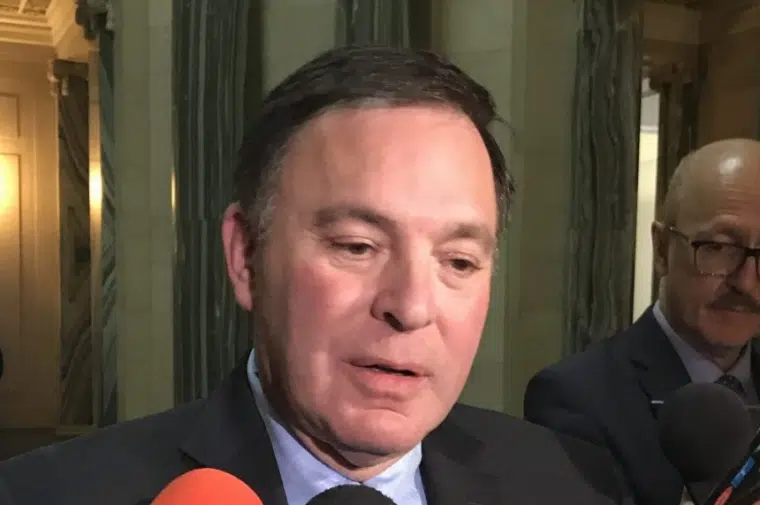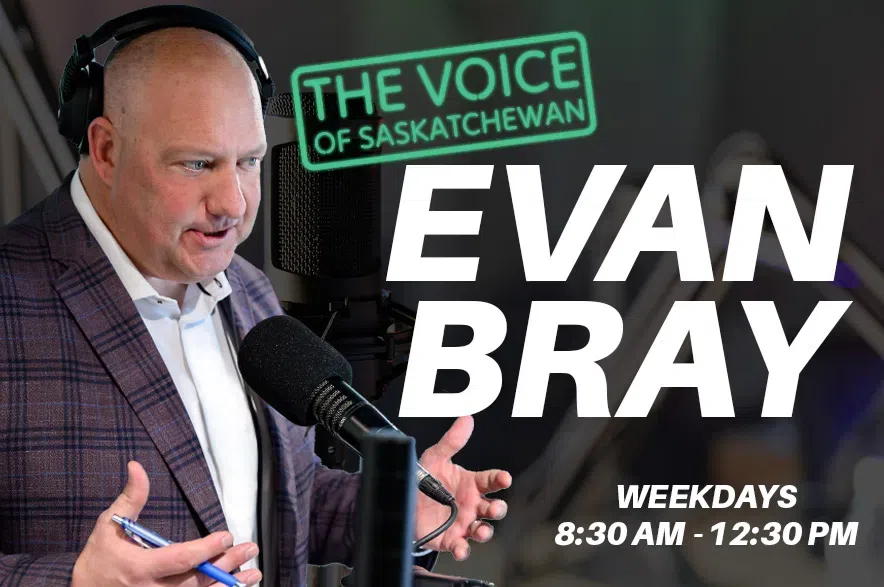Saskatchewan’s provincial government provided new guidance Tuesday for school divisions that plan to implement mandatory mask use when classes resume in the fall.
But Education Minister Gord Wyant and chief medical health officer Dr. Saqib Shahab are leaving it to individual school divisions on whether masks will be mandatory at all.
Asked why there won’t be a blanket mask policy across the province, Wyant told reporters that not all school divisions have expressed interest in one.
“Our 27 school divisions are very diverse,” he said. “In one particular circumstance, when you can socially distance in one school or one classroom, it may be completely different than another school.”
Wyant was questioned repeatedly as to why decision-making was being left to local school boards. He said school boards would make decisions based on local realities, while consulting local health officials.
Shahab expressed a desire to see school divisions move to Level 2 in Saskatchewan’s Safe School Plan to start on Sept. 1, which would include some mandatory masking policies.
“It’s a reasonable thing to start at Level 2 for all schools, where mask use is an option that should be considered,” he said.
But the province’s top doctor acknowledged there are different realities in different schools.
For divisions that want to move right to Level 2 of the Safe Schools Plan, the government suggests students in grades 4 through 12 wear a mask in high-traffic areas, such as in hallways and on buses.
Students in grades 9 through 12 may be required to wear masks in classrooms where they can’t maintain physical distancing, or when they are outside the cohort of their classroom. Teachers and staff members also could be required to wear masks.
A number of organizations, including the Saskatchewan Medical Association, have asked the government to rethink its back-to-school plan to increase the safety of students and staff.
According to a media release from the government, discussions have started for high schools with high populations that may want to move to Level 3 of the plan.
Factors that would be considered include the location, structure and population density of the school. School divisions also may consider options such as alternating days for high school students.
Shahab did add certain measures to the plans of all 27 school divisions in the province. They include:
- Teacher and class cohorting, with a focus on cohorting teachers to a limited number of students and keeping students in one cohort as much as possible;
- In elementary school settings, students’ cohorts will be the classroom;
- In high school settings where cohorting is more complex, school divisions will be encouraged to find creative solutions to move students in cohorts where possible;
- Front-facing instruction for students, with any exceptions identified for approval by public health; and
- Staggered start times, breaks and end times, where possible.
The government also is encouraging students to bring their own non-medical cloth masks to school. If that isn’t possible, the province purchased six million disposable masks that will be available to students, teachers and staff at the beginning of the school year and on a daily basis.
Wyant said if parents, staff or students are in a school division that decides to forgo mandatory masks, there are still options available to them to help them feel safe.
“There’s nothing preventing teachers from masking up in a classroom … and there’s nothing preventing students from wearing masks in the classroom should their parents direct their children to do that,” he said.
Wyant noted there are also online learning opportunities available.
Shahab noted schools should be ready to move to other levels within the Safe Schools Plan quickly, specifically referencing Level 3 which would see reduced school capacity and hybrid learning implemented.
NDP education critic responds
After hearing the government’s update, NDP Education Critic Carla Beck said she was “astounded by this government’s complete lack of planning for a safe return to schools.”
Beck said the guidance provided by the government didn’t go far enough, noting: “Parents still do not know when, and under what conditions, mask use will be mandatory.”
“It is incredibly frustrating that once again the government has chosen to direct school divisions to ‘find creative solutions’ rather to provide clear guidance or funding on cohorting and physical distancing,” Beck added.
Students to be prioritized for testing, class suspensions possible if kid tests positive
Shahab was also asked on Tuesday about potential scenarios where students in a classroom test positive for COVID-19.
He said contact tracers would immediately investigate circumstances, noting if a child only had close contact with “four or five” other children, parents would be informed to keep those children in isolation pending COVID-19 tests.
“It will depend on when the child becomes symptomatic, what were the child’s activities two days before they developed symptoms,” Shahab said.
“If there’s more mingling in the class … it may be reason to suspend the class for a couple of weeks.”
But Shahab stressed it would be dealt with on a “case-by-case basis.”
He added children in school settings would be prioritized for getting COVID-19 test results in a “timely manner.”
Teachers’ union responds
The Saskatchewan Teachers’ Federation (STF) said in a media release it remains concerned about the inconsistency between school reopening plans and the guidelines in other sectors.
“In a time of crisis, we should be able to rely on public health directives, rather than suggestions, to ensure a healthy and safe return to school. We had hoped for a more definitive response and consistent approach across the province,” STF president Patrick Maze said in the statement.
“Planning and implementation will also be extremely challenging given that there are only three weeks until school starts.”
The release added the STF is committed to working with its partners to help ensure a safe and successful school reopening.











